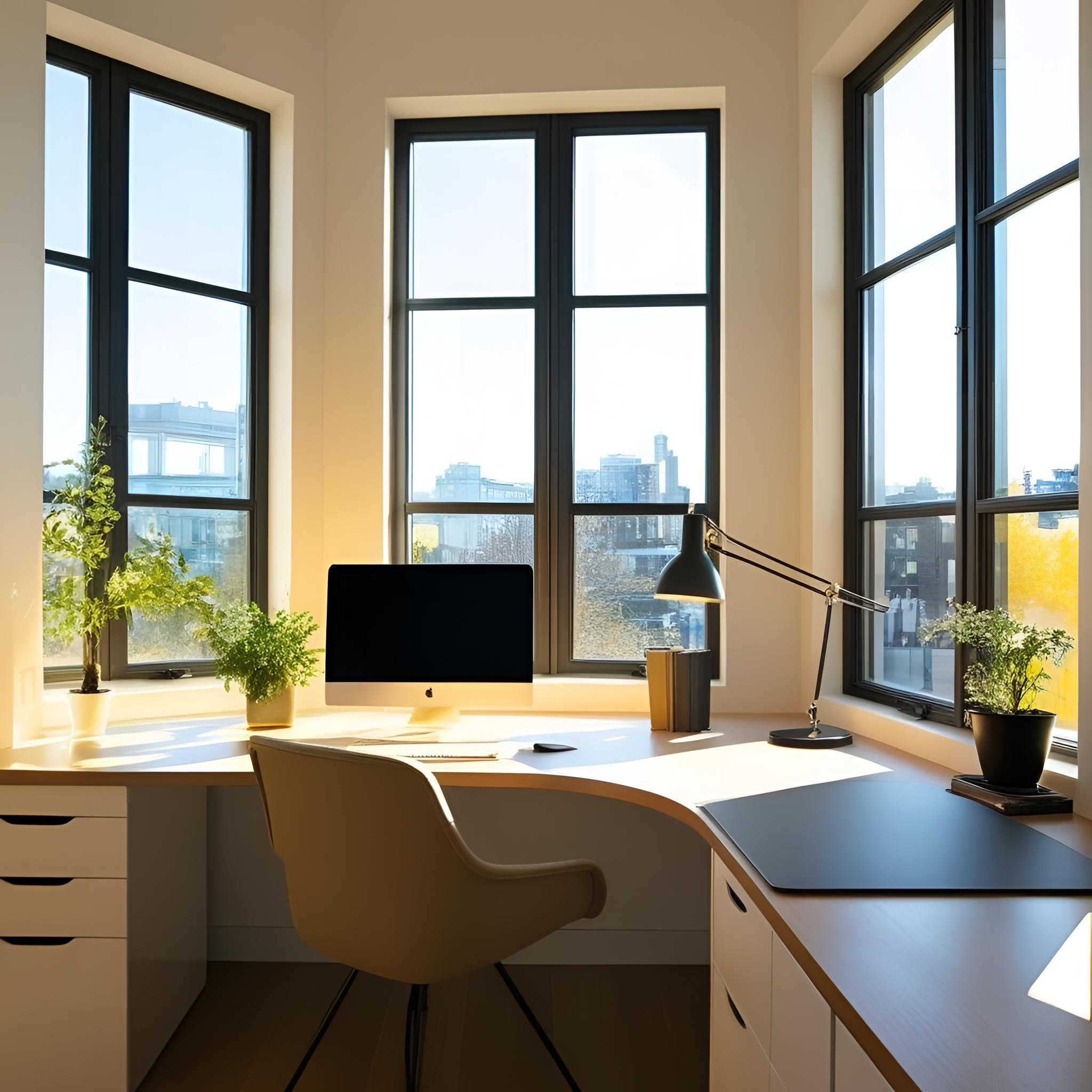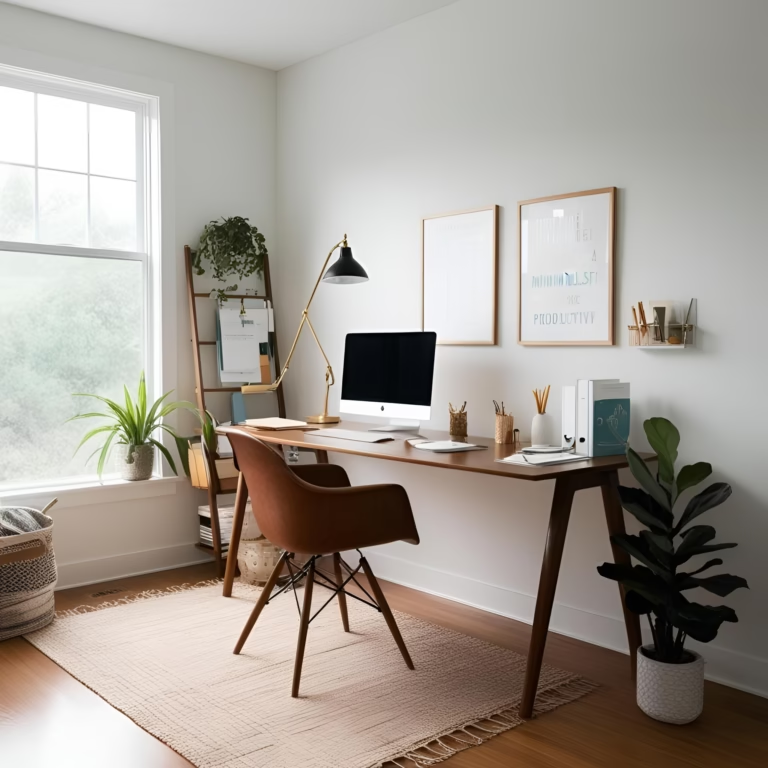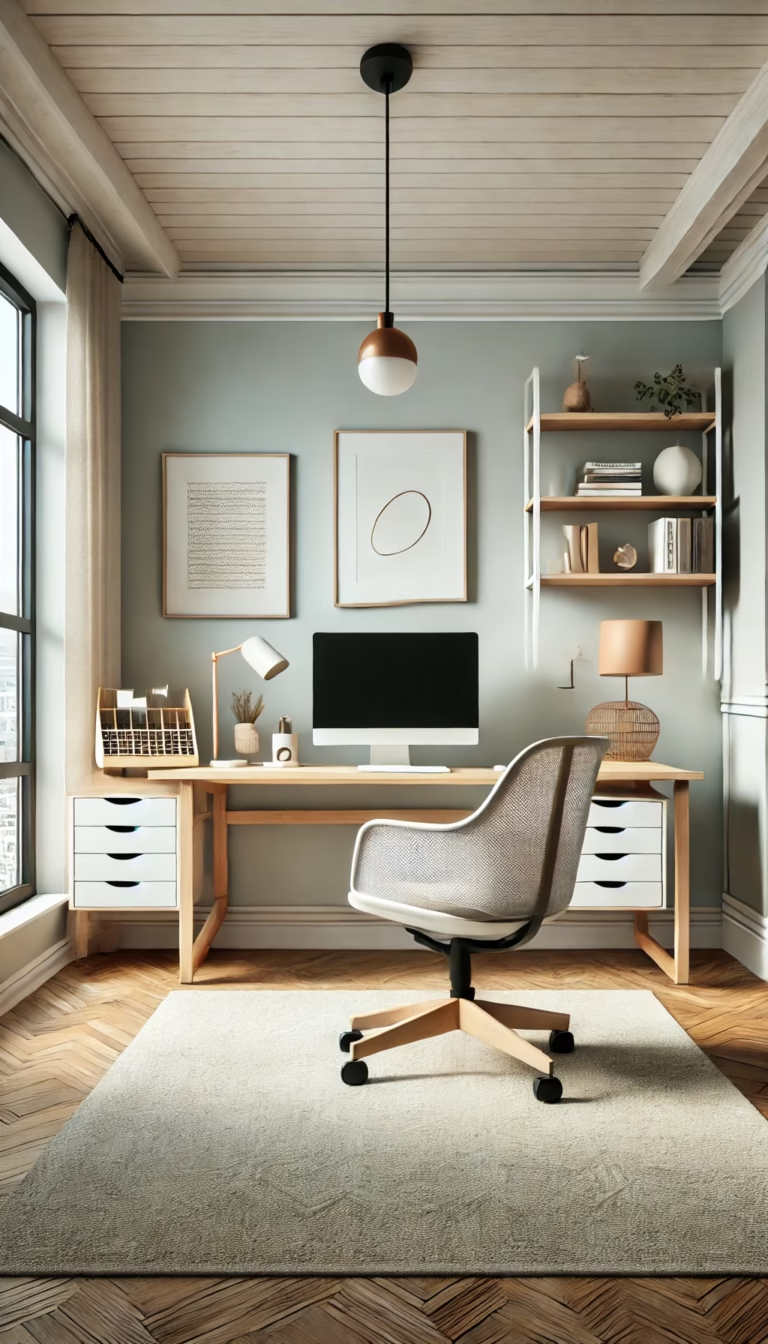Natural Lighting: Transform Your Workspace with Sunlight
Imagine sitting at your desk, bathed in the warm, golden glow of sunlight streaming through a nearby window. Not only does it make your workspace feel inviting, but it also has a profound impact on your well-being and productivity. Natural lighting is one of the most underrated yet powerful elements of workspace design. By harnessing the power of sunlight, you can create a brighter, healthier, and more inspiring environment. In this guide, we’ll explore the benefits of natural lighting, how to maximize it in your workspace, and tips for reducing eye strain while working in well-lit conditions.
What is Natural Lighting?
Natural lighting refers to the use of sunlight to illuminate a space, as opposed to artificial lighting like lamps or overhead lights. It’s a key component of workspace design, offering a range of benefits that go beyond simply brightening a room. From improving mood and energy levels to reducing eye strain and enhancing productivity, natural lighting is a game-changer for anyone looking to create a healthier and more efficient workspace.
Why Natural Lighting Matters
In today’s world, many of us spend the majority of our day indoors, often under harsh artificial lighting. This can lead to eye strain, fatigue, and even long-term health issues. According to a study published in the Journal of Clinical Sleep Medicine, exposure to natural light during the day improves sleep quality and overall well-being (Boubekri et al., 2014). Additionally, research from the American Academy of Ophthalmology shows that natural light reduces eye strain and can even prevent myopia (nearsightedness) in children and adults (AAO, 2020). By incorporating natural lighting into your workspace, you can create an environment that supports both physical and mental health.

Benefits of Natural Lighting in Your Workspace
1. Reduces Eye Strain and Fatigue
One of the most immediate benefits of natural lighting is its ability to reduce eye strain. Unlike artificial lighting, which can be harsh and uneven, sunlight provides a balanced and diffused light that is easier on the eyes. This is especially important for tasks that require prolonged focus, such as reading, writing, or working on a computer. A study in the Journal of Environmental Psychology found that workers in offices with natural light reported 51% less eye strain and 63% fewer headaches compared to those in artificially lit spaces (Vohs et al., 2017).
2. Boosts Mood and Energy Levels
Natural light has a direct impact on your mood and energy levels. Sunlight triggers the release of serotonin, a hormone that promotes feelings of happiness and well-being. This can help combat feelings of stress, anxiety, and even seasonal affective disorder (SAD). A study by the National Institutes of Health found that employees with access to natural light reported higher levels of job satisfaction and overall happiness (NIH, 2009).
3. Enhances Productivity and Focus
When your workspace is well-lit with natural light, you’re more likely to stay focused and productive. Sunlight helps regulate your circadian rhythm, which in turn improves your ability to concentrate and stay alert. A report by the World Green Building Council found that employees in offices with ample natural light were 15% more productive than those in dimly lit environments (WGBC, 2014).
4. Improves Sleep Quality
Exposure to natural light during the day helps regulate your body’s internal clock, making it easier to fall asleep and stay asleep at night. This is because sunlight suppresses the production of melatonin, a hormone that makes you feel sleepy, during the day and allows it to rise naturally in the evening. A study published in Sleep Health found that workers with access to natural light slept an average of 46 minutes more per night than those without (Figueiro et al., 2019).

How to Maximize Natural Lighting in Your Workspace
Not everyone has the luxury of a workspace with large windows, but there are still plenty of ways to make the most of the natural light you do have. Here are some practical tips:
1. Position Your Desk Near a Window
If possible, place your desk near a window to take full advantage of natural light. Position it so that the light comes from the side rather than directly in front of or behind you, as this can cause glare or shadows.
2. Use Light-Reflecting Colors
Choose light, neutral colors for your walls, furniture, and decor. These colors reflect sunlight, making your space feel brighter and more open. Avoid dark colors, which can absorb light and make the room feel smaller and dimmer.
3. Keep Windows Clean and Unobstructed
Make sure your windows are clean and free of obstructions like heavy curtains or furniture. Use sheer curtains or blinds to diffuse harsh sunlight while still allowing natural light to filter through.
4. Add Mirrors and Reflective Surfaces
Mirrors and other reflective surfaces can help bounce natural light around the room, making it feel brighter and more spacious. Place a mirror opposite a window to maximize the effect.
5. Incorporate Glass or Transparent Furniture
Glass desks, tables, and shelves can help light pass through your workspace, reducing shadows and creating a more open feel.

Tips for Reducing Eye Strain with Natural Lighting
While natural light is beneficial, it’s important to use it wisely to avoid glare and eye strain. Here’s how:
1. Avoid Direct Sunlight on Your Screen
Position your monitor so that sunlight doesn’t shine directly on it, as this can cause glare and make it difficult to see. Use an anti-glare screen if necessary.
2. Use Adjustable Window Coverings
Sheer curtains or adjustable blinds allow you to control the amount of light entering your workspace, reducing glare while still benefiting from natural light.
3. Balance Natural and Artificial Light
On cloudy days or in the evening, supplement natural light with soft, warm artificial lighting to maintain a consistent level of brightness.
4. Take Regular Breaks
Even in a well-lit workspace, it’s important to give your eyes a break. Follow the 20-20-20 rule: every 20 minutes, look at something 20 feet away for 20 seconds.
Conclusion
Natural lighting is a simple yet powerful way to transform your workspace. By reducing eye strain, boosting mood, and enhancing productivity, sunlight can have a profound impact on your workday. Whether you’re redesigning your home office or optimizing a corporate workspace, incorporating natural light should be a top priority. With a few thoughtful adjustments, you can create a brighter, healthier, and more inspiring environment that supports your well-being and success.
Ready to let the sunshine in? Start maximizing natural light in your workspace today and experience the difference for yourself!
References
- Boubekri, M., Cheung, I. N., Reid, K. J., Wang, C. H., & Zee, P. C. (2014). Impact of windows and daylight exposure on overall health and sleep quality of office workers. Journal of Clinical Sleep Medicine, 10(6), 603-611. Link
- American Academy of Ophthalmology (AAO). (2020). Should Kids Be Outside More? Link
- Vohs, K. D., Redden, J. P., & Rahinel, R. (2017). Physical order produces healthy choices, generosity, and conventionality, whereas disorder produces creativity. Journal of Environmental Psychology, 49, 1-8. Link
- National Institutes of Health (NIH). (2009). The impact of natural light on workplace well-being. Link
- World Green Building Council (WGBC). (2014). Health, Wellbeing, and Productivity in Offices: The Next Chapter for Green Building. Link
- Figueiro, M. G., Steverson, B., Heerwagen, J., Kampschroer, K., Hunter, C. M., Gonzales, K., … & Rea, M. S. (2019). The impact of daytime light exposures on sleep and mood in office workers. Sleep Health, 5(1), 21-32. Link







